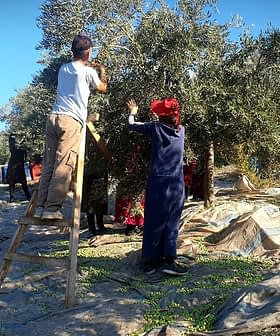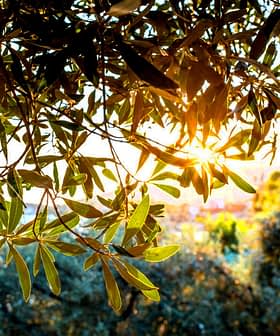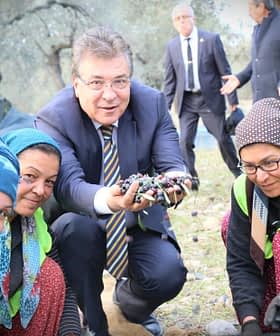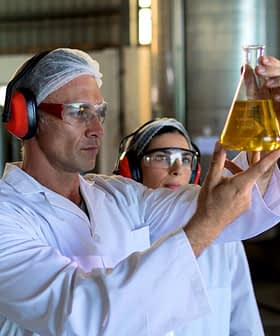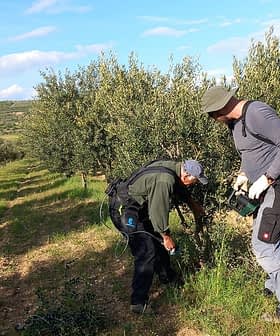One Croatian island known throughout history for being a source of excellent olive oil will soon see its olive oil recognized with a Protected Designation of Origin (PDO) certification from the European Union.
The renowned extra virgin olive oil produced on the island of Brač is mainly extracted from the Oblica variety. It will be the sixth PDO for which Croatian producers have applied, adding to Cres, Istria, Korcula, Krk and Solta.
A family table without olive oil is unthinkable on the island of Brač.
Located off the Croatian coastline between Split and Makarska in the heart of Dalmatia, Brač is the third largest island in the Adriatic Sea and boasts breathtaking shores and rolling hills.
On Brač, where tourism thrives, quality olive oil production has long been part of the local identity. Olive trees have grown on the island for millennia. Even the Roman naturalist Pliny the Elder credited the island as a source of excellent olive oil.
“The olive has always been the most important agricultural crop on the island of Brač,” Tija Mlinac, an agronomist and the general manager of the Poljoprivredna Zadruga cooperative in Supetar, one of the main island’s towns, told Olive Oil Times.
“The first written traces of olive cultivation can be found in the records of the Greko-Roman travel writer Strabo from the first century B.C., and the edict of Emperor Diocletian from the third century A.D., in which olive cultivation is mentioned as significant,” she added.
The PZ Supetar cooperative is the leading promoter of the extra virgin olive oils from the island receiving PDO certification. According to the PDO specifications, Brač olive oil is produced with at least 80 percent autochthonous Oblica olives, all of which must come from registered groves on the island.

Photo: Tija Mlinac
“The people of Brač adapted their environment to the needs of olive growing and chose Oblica as the most suitable variety which became dominant on this island,” Mlinac said. “It is fully adapted to demanding geo-climatic conditions which defined the recognizability and quality of Brač olive oil.”
“This quality has been maintained thanks to the continuous production and constant improvement of agro-technical procedures and the technology used to process olives into oil,” she added.
Brač extra virgin olive oil is characterized by its low content of free fatty acids and low peroxide values. The oil boasts a balanced aroma of fresh olive fruit, leaves and grass, with a high level of polyphenols.
“The total content of phenolic compounds in Brač olive oil is higher than 300 milligrams per kilogram of oil,” Mlinac said.
She also emphasized how olive growing means much more to the residents of Brač than just its economic value. It affects their traditions, spiritual life and how they protect their landscape.

Olive mill remains at museum in Škrip. Photo: Tija Mlinac
“The advancement and development of olive growing on Brač in the 16th century were encouraged by the Venetian administration, which suggested to the Duke of Brač that olive trees must be planted on uncultivated areas, thus increasing olive oil production,” she said.
According to historical documents cited by the cooperative, the continuous expansion of olive orchards meant that half a million olive trees produced about “800 wagons of olive oil” by the end of the 18th century. At the time, the island was producing more olive oil than the rest of Dalmatia.
However, in the second half of the 19th century, local farmers began expanding their vineyards and started growing fewer olive trees. Still, Brač remained one of the most relevant olive oil exporters among Dalmatia’s islands, with production above 1.4 million liters each year.
“The great development of olive growing on the island resulted in the founding of the First Dalmatian Oil Cooperative in 1899 in Povlja, and then the Oil Cooperative in Pučišća in 1909,” Mlinac said.

Interior of the Olive Oil Museum in Škrip. Photo: Tija Mlinac
According to the PZ Supetar cooperative, the island’s olive orchards now spread over more than 1,883 hectares, which roughly means they cover one-third of all crops in Brač.
The island also boasts eight modern processing plants located in the major towns. In addition, some farmers run mills and usually sell their products through word of mouth and among acquaintances.
The cooperative estimates that the island’s olive oil production, which is subject to the alternate bearing seasons, reaches between 800 and 1,000 tons per year.
“Only a small number of producers brand their olive oils and sell them through retail chains or in larger quantities outside the island,” Mlinac said. “A large number of small producers are engaged in olive growing as a supplementary occupation, and only a small number live exclusively from the sale of olive oil.”
“Due to the specific terrain with little arable land, olive growing is done by traditional methods without the help of machines,” she added. “Pruning is done by hand as well as harvesting, which ensures a special quality of olives.”
According to Mlinac, the unique climatic conditions mean that local farmers usually harvest their olives between the end of September and the first weeks of October, “when olive fruits are just streaked with a darker color and are of firm consistency, and they well tolerate transport to the oil mill.”

Photo: Tija Mlinac
Such an early harvest reduces the olive oil yields but “ensures the high quality of Brač olive oil,” she added.
After the olives are harvested, they are carefully transported to the mills and processed, ensuring that the temperature never exceeds 27 ºC, which Mlinac said contributes to the specific chemical and sensory properties of Brač olive oil.
“Research has shown that this approach to olive oil production ensures the specifics of Brač olive oil such as low values of free fatty acids and peroxide number, high values of total phenolic compounds, balanced bitterness and spiciness and pronounced fruitiness,” she said.
Along with their dedication to production, the residents of Brač are also enthusiastic olive oil consumers, according to Mlinac. The people of Brač frequently eat green and ripe olives as a side dish, in addition to using olive oil in a variety of local specialties, from salads to fish.
“A family table without olive oil is unthinkable on the island of Brač,” Mlinac said. “At least 2,000 years of the presence of olives and oil processing on Brač has left a deep mark on today’s olive growing and the quality of its olive oil, which enjoys a great reputation in the modern market.”



